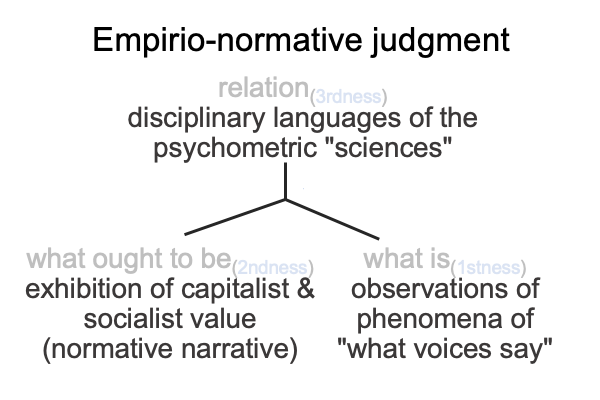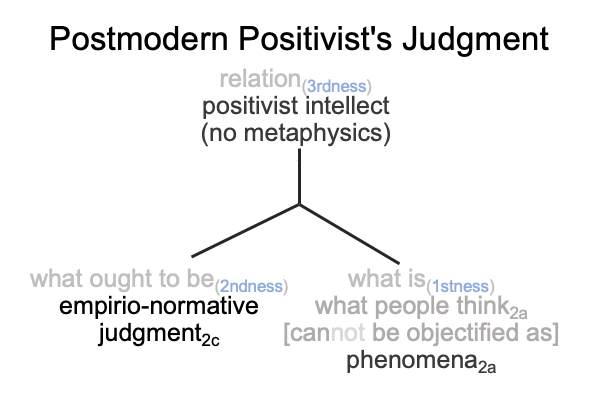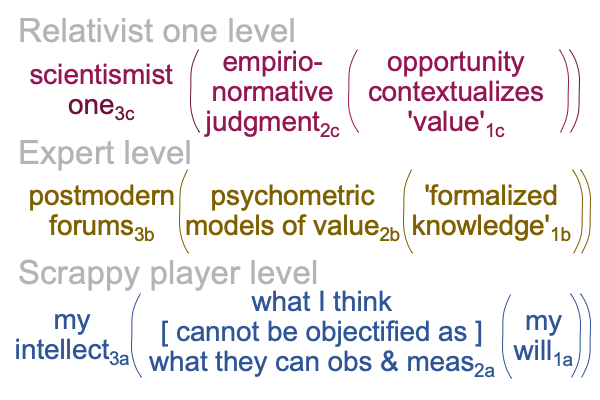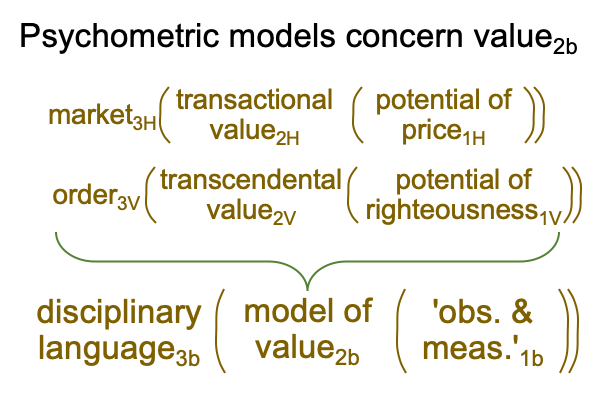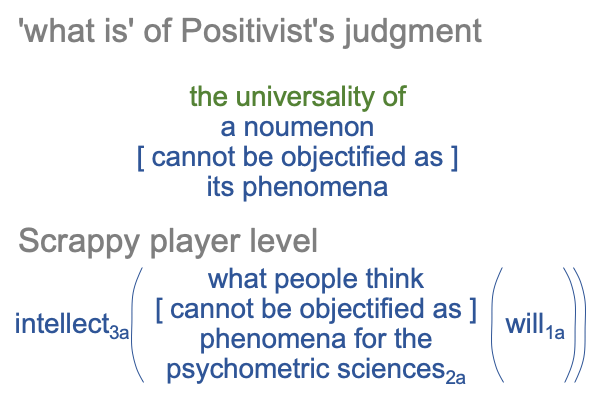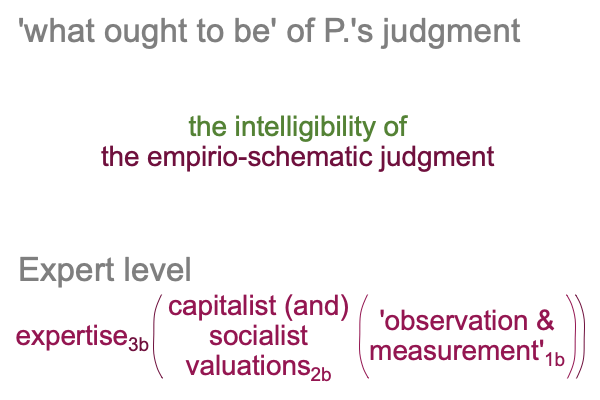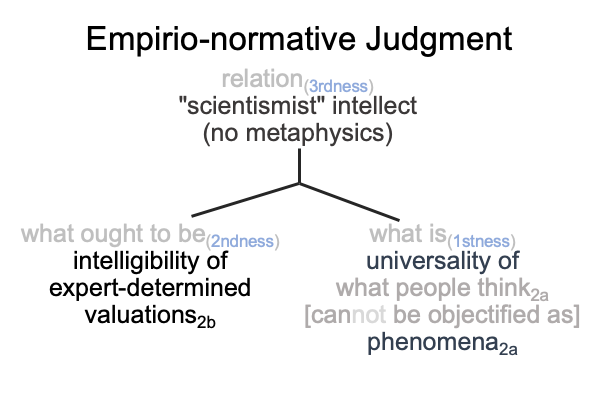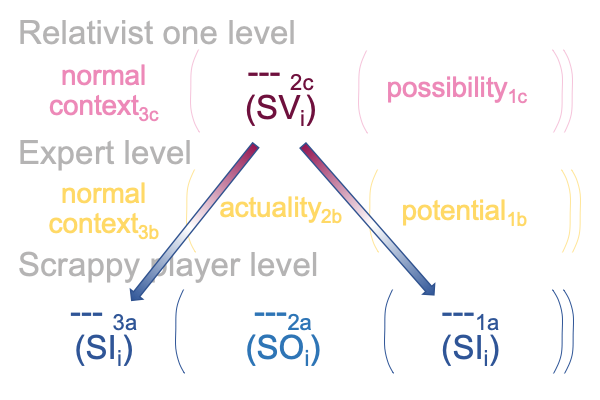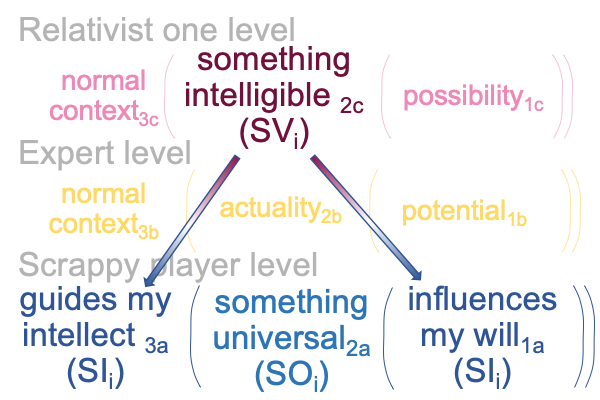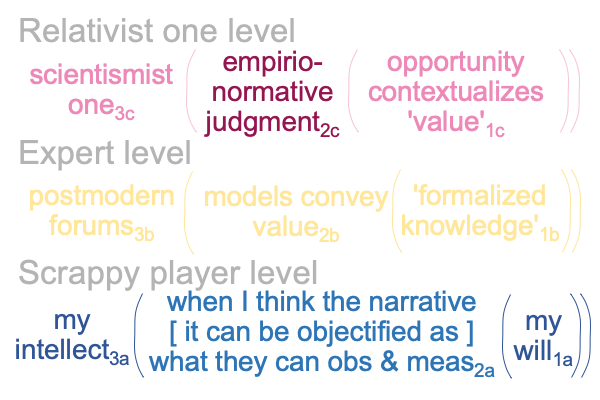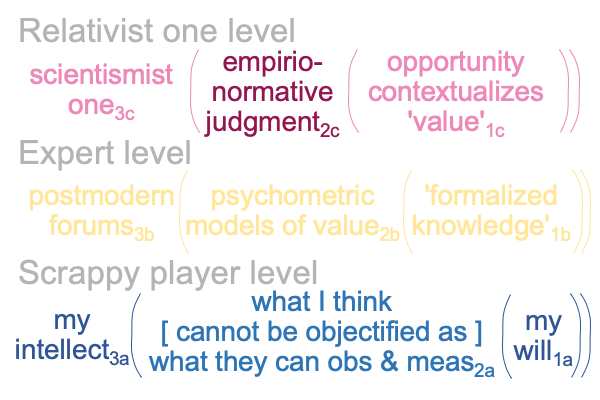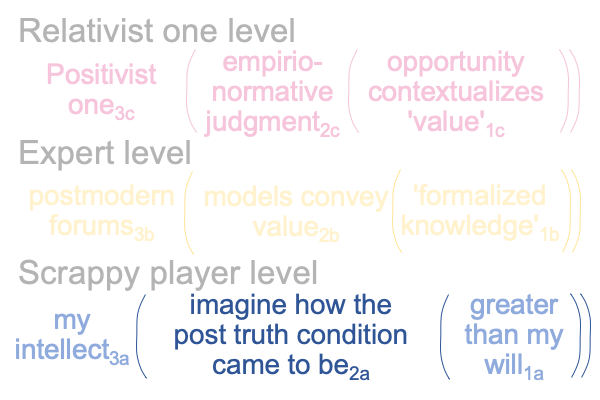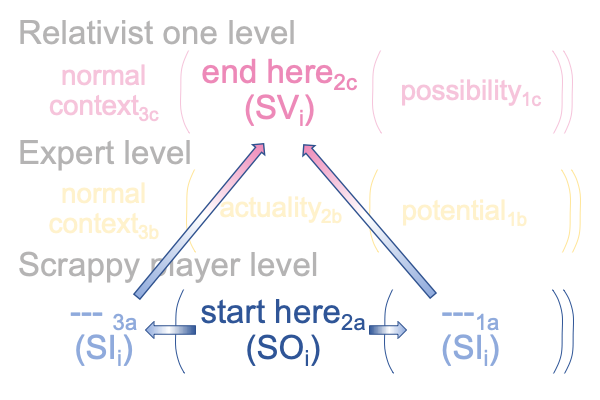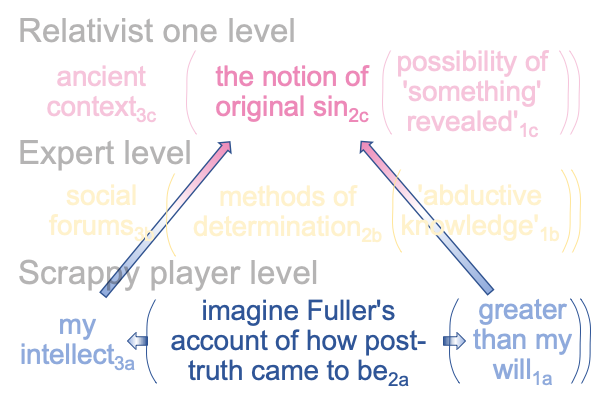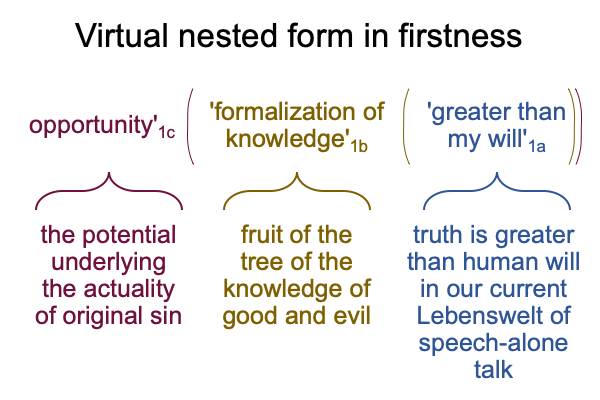Looking at Steve Fuller’s Book (2020) “A Player’s Guide to the Post-Truth Condition” (Part 21 of 26)
0192 Is there another way to think about metalepsis?
Does the interventional sign-relation have the characteristics of metalepsis?
Something mind-dependent2c (imaginative) is taken to be mind-independent2a (real), but not in a straightforward fashion.
An empirio-normative judgment2c (SVi) stands for what people say2a (SOi)
0193 The empirio-normative judgment2c must be mind-dependent because it is a triadic relation.
Triadic relations are mind-dependent beings.
Oh, yeah, triadic relations can also be mind-independent beings.
Ugh, I forgot to add that triadic relations bring mind-independent beings into relation with mind-dependent beings, and visa versa.
This is a little confusing.
0194 Let me start with the following.
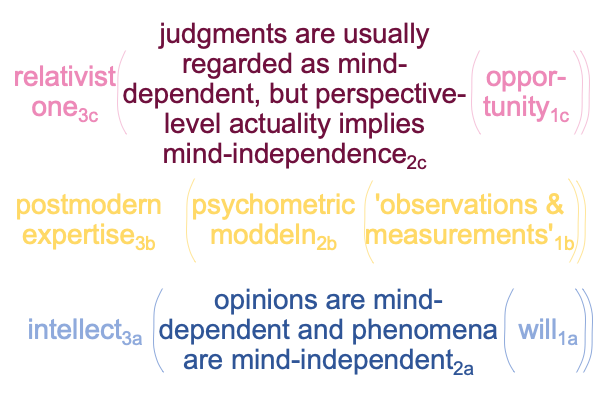
Because a judgment is a triadic relation, and triadic relations often occur in the mind, some regard the empirio-normative judgment2c as mind-dependent.
However, the empirio-normative judgment2c resides as an actuality2 on the perspectivec-level of post-truth interscope. As such, it should be mind-independent.
0195 The same type of distinction applies to the content-level actuality. Opinions2a are mind-dependent and phenomena2a (the observable and measurable facets of people’s opinions) are considered to be mind-independent.
0196 Okay, what about the interventional sign-relation?
How do mind-dependence (imaginative) and mind-independence (real) play out in the interventional sign-relation?
The empirio-normative judgment2c serves as an interventional sign-vehicle (SVi). It2c does so in its role as a perspectivec-level actuality2. Typically, sign-vehicles are mind-independent and sign-objects are mind-dependent. So, when the empirio-normative judgment2c operates as an interventional sign-vehicle (SVi), then it is a mind-dependent being (a judgment) that appears to be mind-independent (a sign-vehicle).
Does that pretension meet the definition of delusion? Or illusion? Or what?
0197 Here is a picture of the interventional sign-relation, so far.
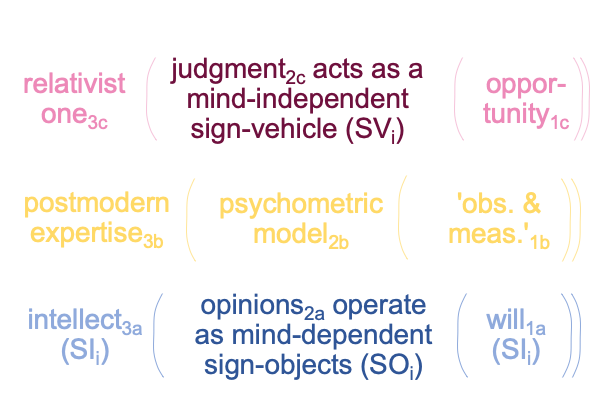
Let me say that again.
Opinions2a are ubiquitous and can be experienced, while the judgment2c that arises from an opportunity1c for the relativist one3c cannot be directly witnessed by a scrappy player.
0198 However, sign-vehicles are taken to be mind-independent. So, even though the perspective-level judgment2c of the relativist one is mind-dependent, its2c role as an interventional sign-vehicle (SVi) gives it the character of mind-independent realness.
Following the same line of thought, interventional sign-object is imbued with the character of mind-dependent imaginative-ness, even though the content-level actuality2a is plain to see and hear. Witness peoples opinions2a.
0199 The empirio-normative judgment2c (an apparently mind-independent SVi) stands for what people say2a (an apparently mind-dependent SOi) in regards to the intellect3a operating on the will1a (SIi). The interventional sign-interpretant (SIi) must be the mechanism whereby something apparently mind-independent (but is constitutionally mind-dependent) becomes something mind-dependent (a SOi consisting of opinions2a).
0200 Does that meet the definition of “metalepsis”?
No, something apparently mind-independent and real (SVi) stands for something apparently mind-dependent and imaginative (SOi) in regards to reason3a,1a (SIi).
Yes, the mind-dependent and imaginative interventional sign-object (SOi) next serves as an apparently mind-independent and real specifying sign-vehicle (SVs).
Overall, opinions2a seem to be mind-dependent because they are interventional sign-objects (SOi).
Then, opinions2a appear to be mind-independent because they are specifying sign-vehicles (SVs).
0201 Okay, does “metalepsis” coincide this transition?
Something mind-dependent is taken to be mind-independent.
What happens next?
The specifying sign-relation couples the content and situation levels. Phenomena2a (SVs) stand for models of valuation2b(SOs) in regards to the disciplinary languages of the psychometric sciences3b operating on the potentials of observation and measurement1b (SIs). Social phenomena2a (SVs) specify psychometric models (SOs).
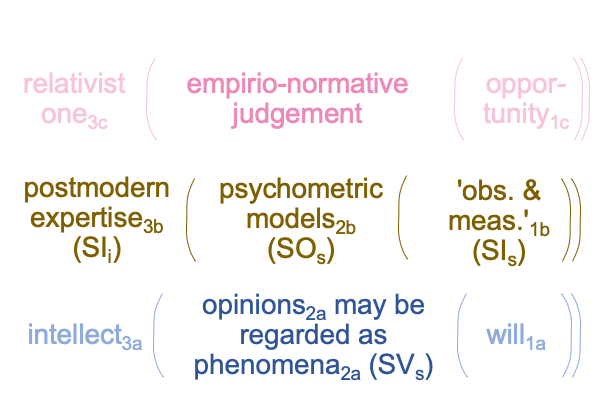
0202 Does Fuller’s version of metalepsis correspond to when something imaginative (SOi) is taken to be real (SVs)?
If I answer in the affirmative, then metalepsis occurs entirely within the content-level actuality, in the transition from the apparently mind-dependent and imaginative interventional sign-object (SOi) to the apparently mind-independent and real specifying sign-vehicle (SVs).
Of course, this transition is a real concern. But, it is not metalepsis.
See Looking at Daniel Dennett’s Book (2018) “From Bacteria, to Bach and Back”, appearing in Razie Mah’s blog for December 2023.
Indeed, this transition leads me forward, towards the expert level, where I have already traveled and ended up asking the following.
Question: How do I pay off my student loans for my journalism degree when I cannot find success2a?
Answer: You have already succeeded2c by getting a degree in journalism2b, according to the psychometric models2b that your professors have taught you.
0203 So what is Fuller aiming at with the introduction of the term, “metalepsis”, where something imaginative (mind-dependent) is regarded as real (mind-independent)?
0204 Why is the empirio-normative judgment2c mind-dependent?
Triadic relation are mind-dependent beings.
Why is the empirio-normative judgment2c mind-independent?
It must be mind-independent in order to serve as the interventional sign-vehicle (SVi).
0205 What element always seems to be mind-dependent?
Opinions2a, the interventional sign-object (SOi).
But, aren’t opinions2a, as specifying sign-vehicles (SVs), taken to be mind-independent?
0206 Uh-oh, I already went in that direction.
I must not go into the specifying sign-relation.
If I am to proceed by way of the “metalepsis” that Fuller must be intimating, I should travel backwards, tracing the structure of the interventional sign-relation, from an imaginative, mind-dependent sign-object (SOi), consisting in opinions2a, towards a real, mind-independent sign-vehicle (SVi), that is located in the slot for a perspective-level actuality2c, currently occupied by an empirio-normative judgment2c.
0207 In order to accomplish this transit, my intellect3a (SIi) must operate on a potential greater than my will1a (SIi).
Here is a picture.
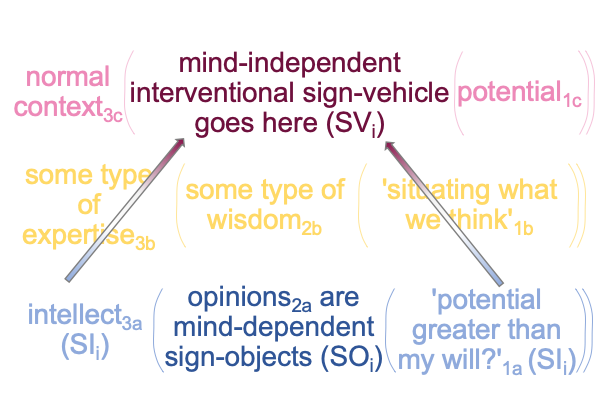
Indeed, I could say that something greater than my intellect3a (SIi) is required as well.
0208 In short, something imaginative (my own opinions and the opinions of those around me2a as SOi) is taken to be real(a perspectivec-level actuality2 that emanates itself2c as an interventional sign-vehicle, SVi).
Metalepsis goes backwards within the interventional sign-relation.

